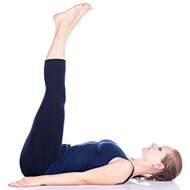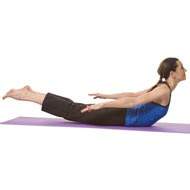- Raja yoga
- Yoga Stretches
- Jivamukti Yoga Poses
- Yoga Tree Pose
- Sun and Moon Yoga
- Wind Removing Pose
- Hare Pose
- Accomplished Pose
- Urdhva Mukha Pinch Mayurasana
- Revolved Abdomen Pose
- Scorpion Pose
- Butterfly Pose
- Half Tortoise Pose
- Revolved Twist
- Balancing Stick Pose
- Cat Pose
- Supported Shoulderstand
- Crane Pose
- Handstand
- Happy Baby Pose
- Firefly Pose
- Scale Pose
- Side Plank Pose
- Upward Facing Two-Foot Staff Pose
- Reclining Big Toe Pose
- Stick Pose
- Revolved Head-to-Knee Pose
- Full Boat Pose
- Upward Extended Feet Pose
- Yoga arm balance poses
- Core Yoga
- Inversion Yoga Poses
- Seated And Twist Yoga
- Horse Pose
- Cobbler Pose
- Seated Wide Angle Pose
- The Compass Pose
- Half Crow Pose
- Bound Half Moon Pose
- Lotus Pose
- Reverse Warrior Pose
- Fixed Firm Pose
- Back-bend Poses
- Forward bend Poses
- Sarvangasana
- Ashtanga Yoga Poses
- Warm up poses
- Seated Poses
- Seated Forward Bends
- Chair Poses
- Standing Poses
- Standing Balancing poses
- Yoga Asanas
- Hatha Yoga Asanas
- Yoga Postures Online
- Partner Yoga Poses
- Anusara Yoga Poses
- Advanced Yoga poses
- Restorative Yoga Poses
- Kids Yoga Poses
- Beginning Yoga Postures
Raised Foot Pose - Uttanpadasana
Raised Foot Pose (Uttanpadasana) is a classic pose that is performed in the supine position. The meaning of ‘ut’ is to lift, ‘tan’ is to stretch and ‘pad’ is leg. This pose involves raising the legs and is used as an exercise to reduce and tone the belly.
Uttanpadasana also goes by the name of Raised Feet Pose. It is also sometimes called Dwipadasana as ‘dwi’ means two and ‘pada’ means legs.
Although there are a number of benefits you can receive from this pose, the benefits would vary from person to person. During the pose make sure that you focus on your breathing and have your movements synchronized.
Steps :
- Begin this pose by coming to a supine position with your back on the ground. Both your feet and knees should be kept together and your breathing should be normal.
- While breathing out, let your back arch by lifting your chin up and turning your head back till the crown of your head is on the floor. You can use your hands to move your head backward if necessary. Keep your arms at your sides and breathe normally.
- Stretch your back and take a deep breath. Then simultaneously lift both your legs to a 50-degree angle from the ground.
- Now lift your arms up and keep them parallel to the ground and above your torso. Make sure that both your legs and arms are kept straight and not bent at the elbows or knees. Continue breathing normally. At this point only the crown of your head and your buttocks will bear the weight of your body.
- To get out of this pose take a deep breath and bring both your legs and arms down to the ground. Bring your back down to the floor, make your body straight and relax. Rest for a little while and repeat the steps. You can practice five rounds of this pose.
Precautions :
- Individuals suffering from lumbar sodalities and muscle pull should avoid practicing this pose.
- People with lower backaches and high blood pressure should practice this pose with caution. During the initial stages you can make use of your hands to lift your legs but make sure that you avoid bending your knees while the legs are being raised.
- Individuals recovering from an injury to the spine should perform this asana lifting one leg at a time. The reason for this is that lifting both your legs will put too much strain on your spine.
- You should also refrain from practicing this pose more than five times each day.
- Pregnant women should avoid practicing this pose during the first few months of pregnancy.
- Practicing this pose during menstruation is not advisable. However, if you are used to practicing it and are comfortable with it you can continue. But avoid practicing it if you experience any cramps or belly ache.
Beginner’s Tip :
Here are some beginner’s tips for raised foot pose you can follow to perform the pose more comfortably and get the most benefits out of it.
While performing the pose make sure that your breathing is normal and from the belly. Make sure that you refrain from straining too much. If you experience any kind of pain or strain you should get out of the pose immediately. During the pose your legs should be kept straight and you should move them down and up slowly while concentrating on your lower abdomen.
Benefit To Body Part :
- When you perform this pose fast you will be able to notice the areas in which it works. It tones and strengthens the pelvis, hips, lower back, abdomen, legs and also the perineum muscles.
- By working the muscles in the legs you will reduce weight in the lower abdomen, thighs and hips. This pose is also considered an excellent exercise for the lower abs.
- Raised foot pose is also recommended for women who have given birth recently and want to reduce weight without doing too much exercise and tiring themselves.
- Pregnant women can practice this pose carefully in the third trimester against back pain. If you find it difficult to lift your legs up you can perform this posture against a wall and relax the back.
- This posture is excellent for athletes as it gives balance and strength to the body.
- The pose is said to improve the functioning of the digestive system and provide relief to problems of indigestion and other stomach-related disorders.
- Uttanpadasana also helps improve the circulation of blood to the lymph nodes and joints.
- The Raised Foot Pose is believed to be effective in boosting the health of the heart, lungs, liver, pancreas, and intestines.
- Since the pose is an intensive spinal stretch, it also helps correct back problems. However, it can worsen back problems if not done correctly. It is therefore best to speak with your doctor if you have any underlying injuries or medical conditions.
Therapeutic Applications :
- It stimulates the second chakra.
- It works on improving sexuality and balances the hormones.
- It helps in the activation of the nervous system.
Variations :
- Instead of performing the posture by raising both the legs you can do it by lifting one leg at a time.
- You could also make use of a wall to rest your legs on, if you have difficulty in lifting your legs up.
Although the raised foot pose seems to be quite simple, it’s not very easy to remain in the posture for long. During the initial stages, you can try and hold onto the pose for 5–10 seconds. Make sure that you perform the posture within your physical limits. If you begin to experience discomfort you should release from the posture. While performing the pose make sure that you avoid bending the knees and lifting the buttocks or lower back.



